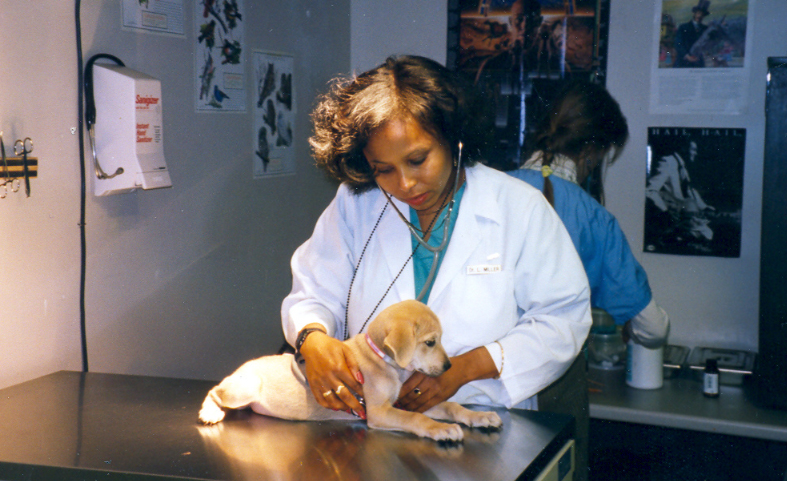February 3, 2022
Two Black Veterinarians Who Wrote the Future of Animal Welfare
February is Black History Month, created to address the too often ignored — or suppressed — contribution of Black people to history. What better time to introduce you to two of the most important figures in the history of the animal welfare movement?
Dr. William Key
Early in the twentieth century, Dr. William Key, a veterinarian and formerly enslaved person, spearheaded a movement in animal welfare. With his horse, Beautiful Jim Key, Dr. Key advocated for kindness and compassion for all animals. Dr. Key trained Beautiful Jim Key with his philosophy — using patience and kindness rather than force and built an incredible bond with his horse. Dr. Key and his talented horse toured America for nine years, showcasing the power of gentle patience and empathy towards animals.
As Dr. Key travelled, he and his amazing horse — who could read, write, spell and do mathematics — captured the imagination of thousands of children and inspired them to take a pledge to always be kind to animals. He later allied with humane societies throughout the country.
Dr. Key was ahead of his time and he and Beautiful Jim Key were undoubtedly one of the foundations of the animal welfare movement that continues to this day.
Dr. Lila Miller
Widely known as the mother of shelter medicine, Dr. Lila Miller was a pioneer and agent of change. In 1977, Dr. Miller was one of the first two Black women to obtain a Doctor of Veterinary Medicine Degree from Cornell Veterinary College.
At the time, annual euthanasia rates in American shelters were in the millions due to a lack of space and minor medical and behavioural conditions that would be considered largely treatable today. As Dr. Miller recalls, “There was a real stigma attached to veterinarians working in shelters. The perception was that the only vets who worked there were at the end of their careers, or they couldn’t hack it in the real world.”
Dr. Miller dedicated her career to breaking this stigma and developed the first American guidelines written by a veterinarian for shelter animal care.
Dr. Miller also was one of the first to recognize there is so much more to caring for animals in a shelter than simply providing food and water. She highlighted the importance of enrichment to meet animals’ physical and mental needs during their stay in shelter.
Without Dr. Miller, veterinary care for animals in shelters as we know it might not exist.
Dr. Key and Dr. Miller are just two among many who have made tremendous contributions to advancement in not just animal welfare, but the sum of our accomplishments as a society. Let us celebrate these accomplishments, the people who made them possible and how our community and society is all the more prosperous because of them.
Bruce Roney
President & CEO


